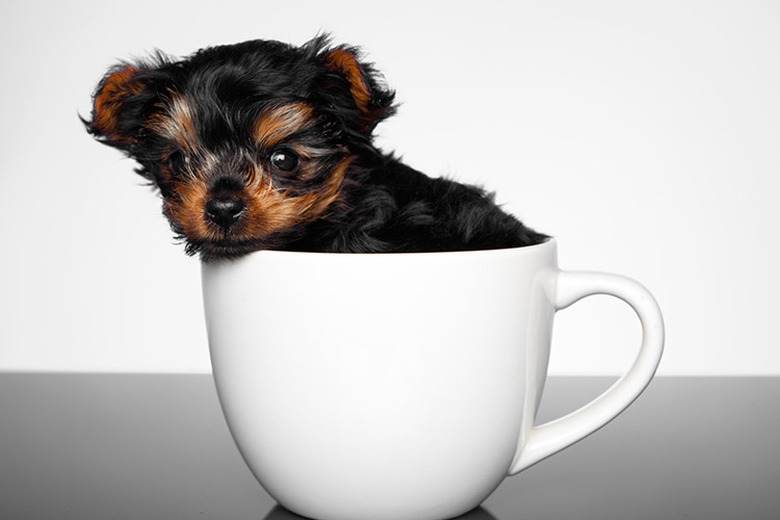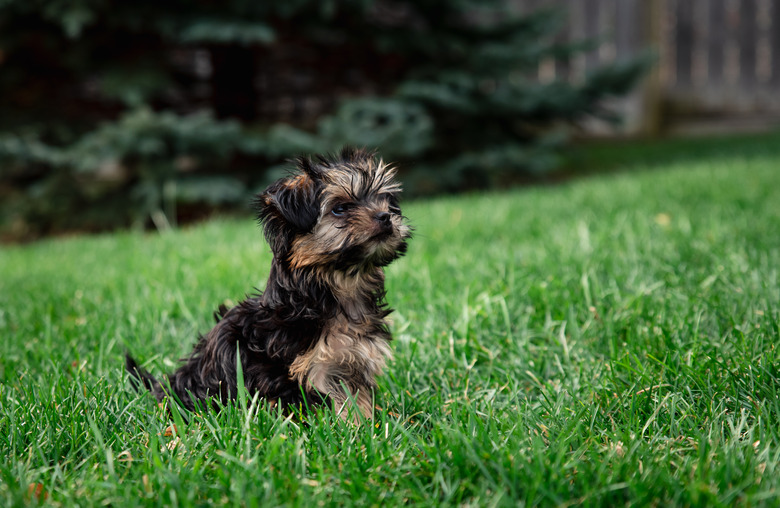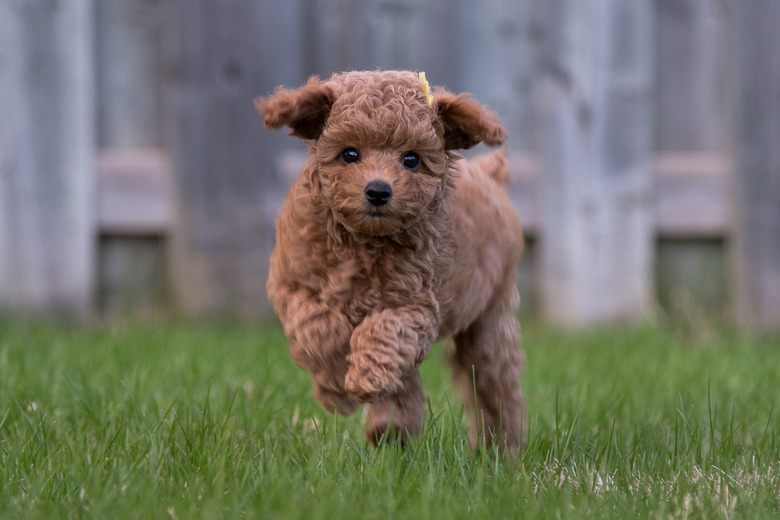Toy Vs. Teacup Dogs
Toys and teacups might look the same, but they aren't created equal. In fact, the way teacups are "created" generates more than a few raised eyebrows and "tsk, tsk" comments from dog lovers in the know.
Toys are small dogs, recognized by the American Kennel Cup as a breed. Teacups are "manufactured" by breeders using questionable practices that can lead to a life of poor health. You might also hear these pets referred to as "mini teacup dogs" or a "mini toy dog."
Understanding the difference between toys and teacups will help you choose the right type of pet for you, and let you use the correct term to call your companion.
What is a toy dog breed?
What
is a toy dog breed?
The American Kennel Club recognizes 21 dogs in the toy group of dog breeds:
- Affenpinscher
- Biewer terrier
- Brussels griffon
- Cavalier King
Charles spaniel - Chihuahua
- Chinese crested
- English toy spaniel
- Havanese
- Italian greyhound
- Japanese chin
- Maltese
- Manchester terrier
- Miniature pinscher
- Papillon
- Pekingese
- Pomeranian
- Poodle (toy)
- Pug
- Shih tzu
- Silky terrier
- Toy fox terrier
- Yorkshire terrier
Toy group dogs are social, loyal, and intelligent, so they should be easy to train. This is important if you plan on taking them out with you, especially to places where you might not be able to take a full-size dog.
What are teacup dogs?
What are teacup dogs?
A teacup is a tiny dog, often less than 4 pounds, created by breeding two litter runts or other very small dogs. The term "teacup" is a nickname and not an official breed name recognized by the AKC. For example, while a Pomeranian is a breed, a teacup Pomeranian is simply a Pom that's been bred to be tiny.
Teacups are bred as a marketing technique to increase the sales of breeders. Many unsuspecting buyers don't realize the health problems of these dogs until after they adopt them. The good news is, working closely with your vet and taking good care of your companion, your pet can live a happy life that lasts well over a decade.
Where mini, toy, teacup dogs do best
Where mini, toy, teacup dogs do best
Toys and mini teacup dogs thrive where they are safest and don't need to roam outdoors. This is why so many city dwellers choose these dogs. Because of their tiny frames, even jumping off a couch onto a hard floor or tile can cause damage to joints and bones.
Common health problems in teacup dogs
Common health problems in teacup dogs
Tiny dogs have less body mass and fat and tend to have lower body temperatures. This is why you often see teacups dressed in sweaters. They can also suffer from low blood and hypoglycemia, which can lead to seizures. Regular feeding and the right foods can minimize this health problem.
Work with your vet to keep an eye out for other health issues such as arthritis and blindness, as well as digestive, heart, liver, respiratory, trachea, and oral problems.
Caring for types of toy dogs
Caring
for types of toy dogs
You can follow most dog-care guidelines for toys and teacups, remembering that they are tiny. This means that they will need regular exercise, but you'll need to watch for signs of fatigue sooner. Short games of fetch as opposed to running up hills, for example, might be better play periods for these dogs.
Use positive reinforcement when training dogs, rather than negative commands to get the best results and create a strong bond between you and your pet.
Be very careful about leaving these dogs in the presence of children. Kids might literally think of these dogs as toys and hug them too hard or exhaust them playing games.
Toys and teacups are very loving and social in nature so keep an eye on their reactions when you leave them for extended periods to see if they exhibit separation anxiety. This will be especially true if you have just brought a puppy into a new home.


